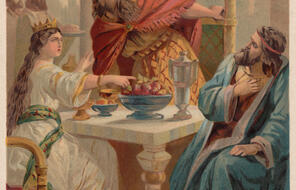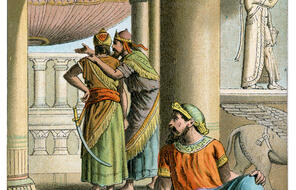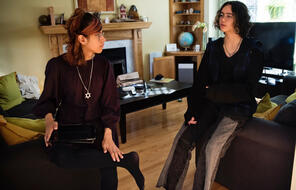
Expressing Diversity in Jewish Identity: Blending In and Standing Out
Duration
Two 50-min class periodsSubject
- History
- Social Studies
Grade
6–8Language
English — USPublished
Overview
About This Lesson
This is the second lesson in a three-lesson series highlighting the historical and contemporary experiences of Jews of color, Sephardic Jews, and Mizrahi Jews while also considering the impact of antisemitism and “othering” on people who share these Jewish identities. This two-day lesson will use the story of Purim as a frame to examine how Jews have preserved and protected their identities and culture in dominant societies by choosing when to blend in and when to stand out. We will start with ourselves and consider our own multiple identities and the external pressures that influence the ways in which we blend in and stand out in a dominant culture. Using a short film by a teen filmmaker as a launching point, we will then consider the risks and benefits of preserving a minority identity in a majority culture. After a Purim text study, we will gain a general understanding of the history of Mizrahi Jews, with particular focus on their successes and challenges in terms of inclusion in the dominant Jewish narrative. Finally, we will think about how we can create a welcoming community for all types of Jews within our own communities.
This lesson was created in partnership with the Jewish Education Project in conjunction with the Shine A Light Initiative.
Preparing to Teach
A Note to Teachers
Before teaching this lesson, please review the following information to help guide your preparation process.
Lesson Plans
Day 1
Day 2
Educators may want to include this framing at the beginning of today’s lesson.
A common thematic motif of Purim is the hidden and the revealed. In the first activity of Day 2, we explore the reasons why Esther both hid and then subsequently revealed her Jewish identity in the course of the Purim story. After the Purim text study, we will gain a general understanding of the history of Mizrahi Jews. Finally, we will think about how we can create a welcoming community for all types of Jews within our own communities. Whether our Jewish community is perceived as homogenous or diverse, we recognize that the Ashkenazi tradition from Western Europe is the Jewish narrative most often expressed and understood in the United States—by non-Jews in particular but also in many American Jewish communities. While we might like to believe that stereotyping is something that we only experience from outside of our Jewish communities, “othering” happens within our communities as well. As you move through today’s material, consider what kinds of othering we do within our own community and what ways we encourage inclusivity.
The questions we will keep in mind throughout this lesson are:
-
Who are the people, traditions, and rituals we immediately “see” in the dominant Jewish stories we adopt and share, and what people, traditions, and rituals often get “hidden” or marginalized by this dominant narrative?
- In what ways do we ask people to blend or fit into our dominant narratives?
- What can we do to make people feel comfortable and proud to stand out and share expressions of their Jewish identity that are different from dominant expressions?
Materials and Downloads
Quick Downloads
Download the Files
Download allAdditional Resources
Unlimited Access to Learning. More Added Every Month.
Facing History & Ourselves is designed for educators who want to help students explore identity, think critically, grow emotionally, act ethically, and participate in civic life. It’s hard work, so we’ve developed some go-to professional learning opportunities to help you along the way.
Exploring ELA Text Selection with Julia Torres
On-Demand

Working for Justice, Equity and Civic Agency in Our Schools: A Conversation with Clint Smith
On-Demand

Centering Student Voices to Build Community and Agency
On-Demand




















